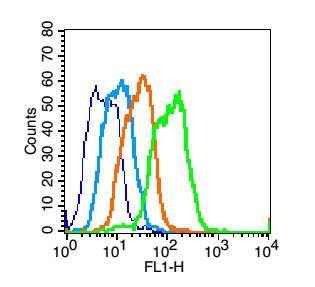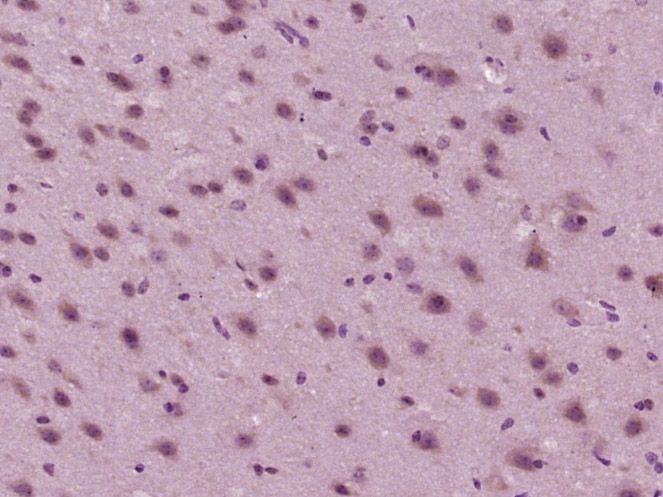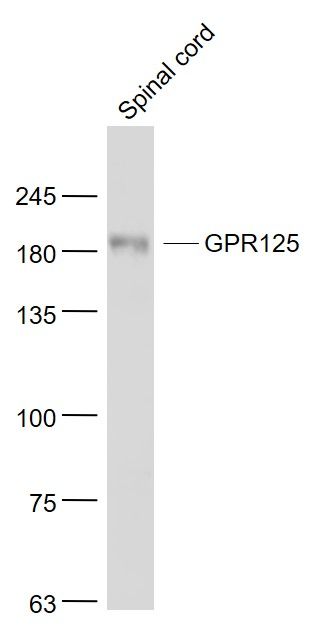-
Product Name
Anti-ADGRA3 antibody
- Documents
-
Description
Rabbit polyclonal antibody to ADGRA3
-
Tested applications
WB, IHC-P, FC
-
Species reactivity
Human, Mouse, Rat, Dog, Cow, Horse, Sheep
-
Alternative names
PGR21 antibody; TEM5L antibody; GPR125 antibody
-
Isotype
Rabbit IgG
-
Preparation
This antigen of this antibody was klh conjugated synthetic peptide derived from human gpr125 422-530/1321
-
Clonality
Polyclonal
-
Formulation
Liquid, 0.01M TBS(pH7.4) with 1% BSA, 0.03% Proclin300 and 50% Glycerol.
-
Storage instructions
Store at -20℃ for one year. Avoid repeated freeze/thaw cycles. The lyophilized antibody is stable at room temperature for at least one month and for greater than a year when kept at -20℃. When reconstituted in sterile pH 7.4 0.01M PBS or diluent of antibody the antibody is stable for at least two weeks at 2-4℃.
-
Applications
WB:1:500-2000
IHC-P:1:400-800
FC:1μg/Test
-
Validations

Fig1: Blank control (blue line): Mouse colon (blue).; Primary Antibody (green line): Rabbit Anti-GPR125 antibody ; Dilution: 1μg /10^6 cells;; Isotype Control Antibody (orange line): Rabbit IgG .; Secondary Antibody (white blue line): F(ab’)2 fragment goat anti-rabbit IgG-FITC; Dilution: 1μg /test.; Protocol; The cells were fixed with 2% paraformaldehyde for 10 min at room temperatureCells stained with Primary Antibody for 30 min at room temperature. The cells were then incubated in 1 X PBS/2%BSA/10% goat serum to block non-specific protein-protein interactions followed by the antibody for 15 min at room temperature. The secondary antibody used for 40 min at room temperature. Acquisition of 20,000 events was performed.

Fig2: Paraformaldehyde-fixed, paraffin embedded (mouse brain tissue); Antigen retrieval by boiling in sodium citrate buffer (pH6.0) for 15min; Block endogenous peroxidase by 3% hydrogen peroxide for 20 minutes; Blocking buffer (normal goat serum) at 37℃ for 30min; Antibody incubation with (GPR125) Polyclonal Antibody, Unconjugated at 1:400 overnight at 4℃, followed by operating according to SP Kit(Rabbit) (sp-0023) instructionsand DAB staining.

Fig3: Sample:; Spinal cord (Mouse) Lysate at 40 ug; Primary: Anti- GPR125 at 1/1000 dilution; Secondary: IRDye800CW Goat Anti-Rabbit IgG at 1/20000 dilution; Predicted band size: 143 kD; Observed band size: 183 kD
- Background
Related Products / Services
Please note: All products are "FOR RESEARCH USE ONLY AND ARE NOT INTENDED FOR DIAGNOSTIC OR THERAPEUTIC USE"
